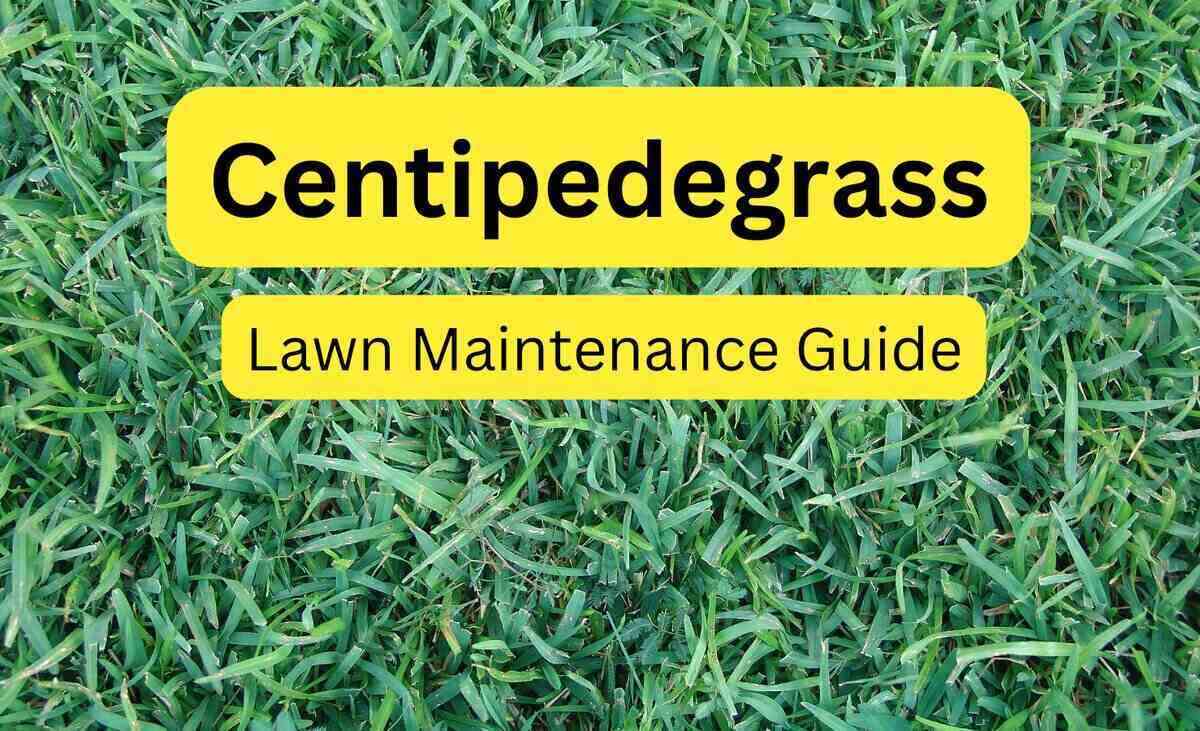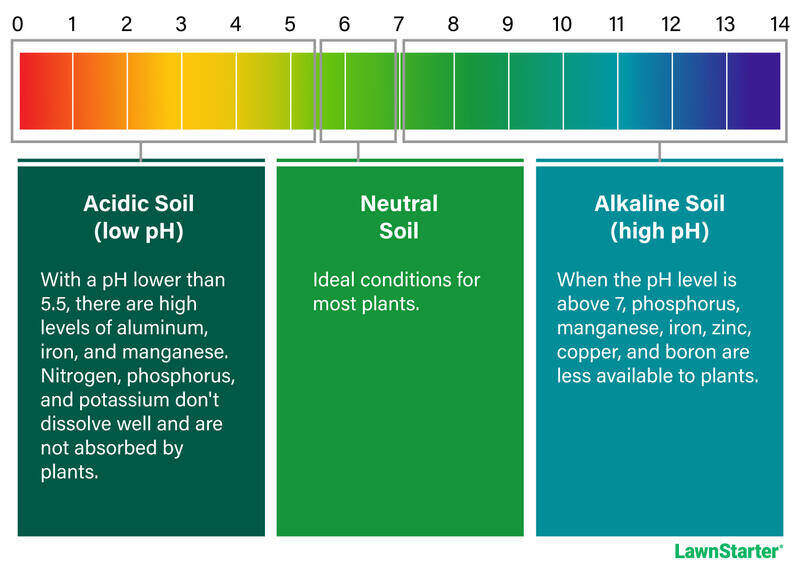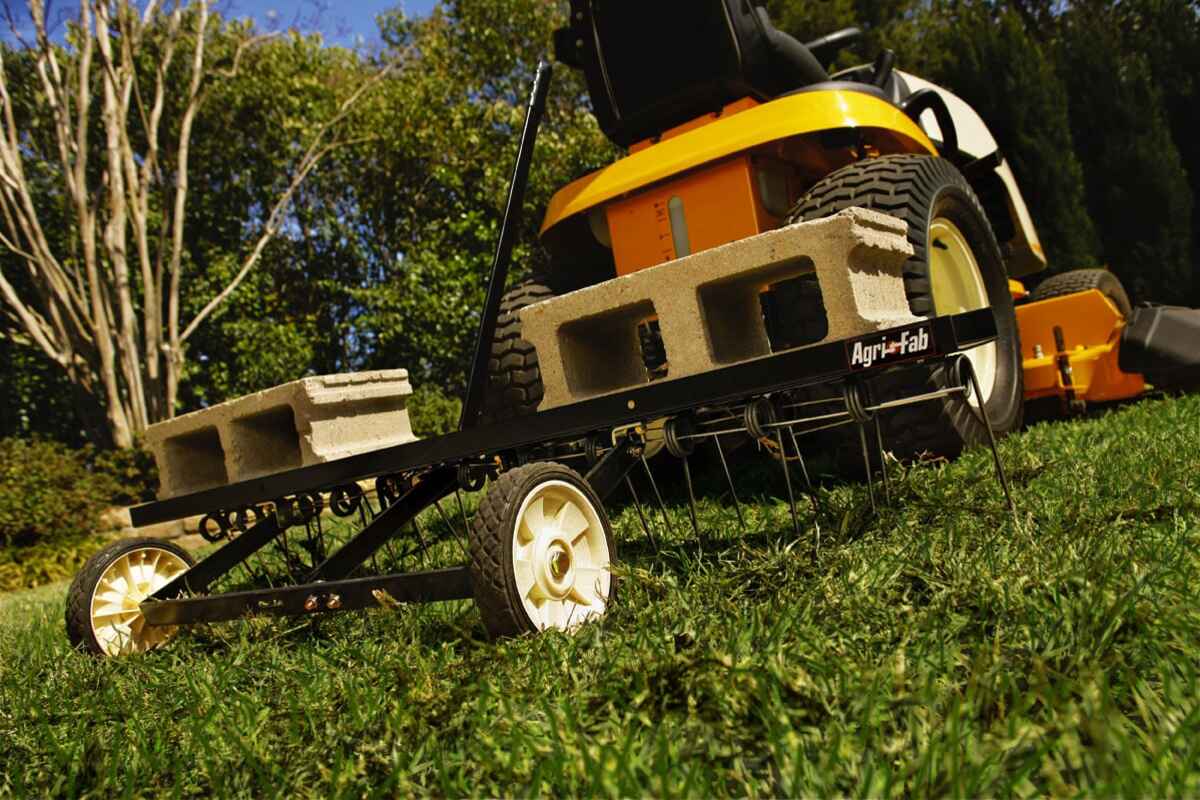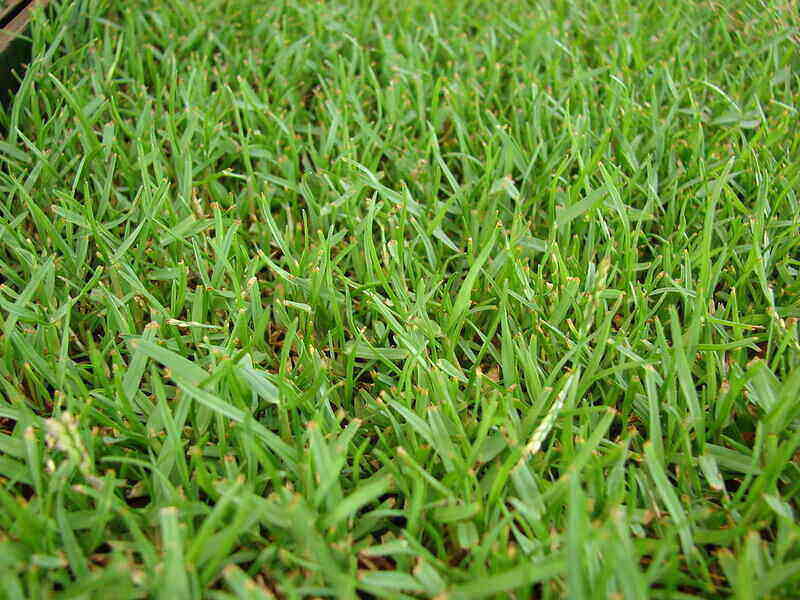
Centipedes may give you the heebie-jeebies, but centipedegrass shouldn’t. This warm-season grass type is common in the southern half of the United States because of its relatively low maintenance. But how do you determine whether this grass is right for your lawn? How do you care for it? Let’s go over the unique characteristics and needs of centipedegrass lawns.
What is Centipedegrass?
Centipedegrass originated from China and Southeast Asia and was introduced to the United States in 1916. Since then, it has become a popular grass type in the southern states and is well adapted for many cities, including:
- Arlington, TX
- Atlanta, GA
- Fort Lauderdale, FL
- Houston, TX
- Huntsville, AL
- Orlando, FL
- Pensacola, FL
- Raleigh, NC
- San Antonio, TX
- Tampa, FL
Centipedegrass is coarse-leafed, apple green, and slow growing. Since it’s a warm-season grass, it will actively grow in summer and turn brown and dormant in winter. Warm-season grasses grow best in the southern half of the United States. They may also work in the transition zone in the middle of the country, but centipedegrass could suffer in the harsh winters. The most cold-tolerant seeded variety is TifBlair.
Many consider centipedegrass to be low-maintenance. It doesn’t need much fertilization or frequent mowing. It can also handle low-fertility soils that other grass types may struggle with.
However, centipedegrass decline is a real problem. Centipedegrass decline is when a lawn that was doing well doesn’t green up in the spring, develops dead areas and yellow edges, and dies. Anything from poor cultural management to pests and diseases can cause this condition. No matter the cause, it can be discouraging to homeowners who experience it.
If your centipedegrass lawn doesn’t thrive, no matter how well you care for it, consider choosing a different grass type instead.
Classification: Warm-season grass
Spreads by: Stems (stolons)
Shade tolerance: Tolerates full sun and moderate shade. It needs at least 6 hours of full sun.
Drought tolerance: Low
Traffic tolerance: Low
Maintenance needs: Low. It requires infrequent mowing and 1 to 2 pounds of fertilizer per 1000 square feet yearly, depending on soil test results. It can also tolerate acidic soil conditions. Centipedegrass is susceptible to several pests.
Recommended mowing height: 1 to 2 inches
Centipedegrass Monthly Maintenance Calendar
Not everyone’s blessed with a perfect memory, but forgetting an important lawn care task could harm your centipedegrass. Use this calendar to help you remember when to perform each lawn chore.
The green check marks represent the best time to complete a task. The black check marks represent a possible time to complete a task. Not all lawn care chores have an ideal time. This calendar is based on meteorological seasons, meaning each season begins on the first day of the month rather than on equinoxes and solstices.
| Treatment | Mar | Apr | May | Jun | Jul | Aug | Sep | Oct | Nov | Dec | Jan | Feb |
| Mow | ✔ | ✔ | ✔ | ✔ | ✔ | ✔ | ✔ | |||||
| Weekly watering | ✔ | ✔ | ✔ | ✔ | ✔ | ✔ | ✔ | |||||
| Fertilizing | ✔ | ✔ | ✔ | ✔ | ✔ | |||||||
| Soil amendments | ✔ | ✔ | ✔ | ✔ | ✔ | ✔ | ✔ | |||||
| Aerating | ✔ | ✔ | ✔ | ✔ | ✔ | ✔ | ||||||
| Dethatching | ✔ | ✔ | ✔ | ✔ | ✔ | |||||||
| Seeding | ✔ | ✔ | ✔ | |||||||||
| Sod installation | ✔ | ✔ | ✔ | ✔ | ✔ | ✔ | ✔ | ✔ | ✔ | ✔ | ✔ | |
| Pre-emergent weed control | ✔ | ✔ | ✔ | ✔ | ✔ | |||||||
| Post-emergent weed control | ✔ | ✔ | ✔ | ✔ | ✔ | ✔ | ✔ | ✔ | ✔ | ✔ | ✔ | ✔ |
| Grub/pest control | ✔ | ✔ | ✔ | ✔ | ✔ | ✔ | ✔ | ✔ | ✔ | ✔ | ✔ | ✔ |
| Disease control | ✔ | ✔ | ✔ | ✔ | ✔ | ✔ | ✔ | ✔ | ✔ | ✔ | ✔ | ✔ |
Centipedegrass Maintenance Tasks
Centipedegrass will do best if you cater to its unique needs. Here’s everything you need to know about maintaining a new or old centipedegrass lawn.
How to Mow Centipedegrass
Mow centipedegrass every 5 to 7 days when it’s growing. Keep your centipedegrass between 1 and 2 inches tall. Mow less often when the lawn is drought-stressed and raise the height by ½ to 1 inch. However, don’t let the height exceed 2 ½ inches.
Start mowing centipedegrass after it greens up in spring. Cutting too early or too low is especially damaging to centipedegrass because it spreads by aboveground stems. Start at 2 inches, then lower until you reach your preferred height or the grass looks bad (don’t go under 1 inch, though).
Keep mowing at this preferred height up until fall. When night temperatures drop below 70 degrees, raise the mowing height to 2 inches to allow your grass to adjust before the first frost of the year. You don’t need to mow centipedegrass when it’s in winter dormancy. If it stops growing and turns brown, you can put away the mower for the year (after winter maintenance, of course).
You don’t need to remove grass clippings unless they’re clumping or diseased (to avoid the former, see How to Prevent Grass Clumping When Mowing). A mulching lawn mower can turn them into natural fertilizer for your lawn.
How to Water Centipedegrass
Actively growing centipedegrass requires 1 inch of water a week. Water until the grass turns brown and goes dormant in the winter, then water just enough to prevent the soil from being powder-dry. Give your turf a drink if no measurable rain happens in 3 to 4 weeks during winter.
Pro Tip: Don’t water the lawn when air temperatures are below 40 degrees Fahrenheit; otherwise, the grass may freeze.
Centipedegrass can survive several weeks without water, but it’s not the most drought-tolerant grass. Want a visual cue to help you out? Water when you see footprints, dark bluish-gray color, and wilted, folded, or curled leaves. You should also water if dry, hot, or windy conditions occur for a prolonged period.
Your soil type could also affect your watering schedule. Sandy soils drain quickly, so you’ll need to split your watering into two sessions of ½ inch water. Clay soils absorb water slowly, so water until runoff occurs, then wait half an hour before resuming.
Water in the early morning for the best results. Why? Nighttime irrigation makes grass prone to disease, and daytime irrigation could evaporate before adequately absorbing.
Always keep newly sodded or seeded grass moist so it can germinate and form roots.
How to Fertilize Centipedegrass
Fertilizer provides necessary nutrients to your turfgrass when nature doesn’t. Centipedegrass requires about 1 to 2 pounds of nitrogen per 1000 square feet yearly, but this will depend on the results of a soil test and the type of soil you have. Sandy soils typically require more nitrogen fertilizer than clay soils.
When should you apply fertilizer? Healthy, established centipedegrass lawns only need fertilizer once a year. However, you can split fertilization up if necessary. Don’t fertilize until the last frost has passed and the grass has greened up. The best time to fertilize warm-season grasses like centipedegrass is in summer. Read labels carefully, though; because some fertilizers cause damage when temperatures are too high.
What fertilizer should you use? Get a laboratory soil test before you decide. Soil tests show you which nutrients are in the soil and which ones are deficient. Early spring is a great time to submit a soil sample, so you’ll be prepared come summer.
Centipedegrass can’t tolerate high-phosphorus soils or low-potassium soils. Don’t apply phosphorus unless recommended by a soil test. Too much phosphorus causes excess thatch growth and disease in centipedegrass.
How to Apply Soil Amendments to Centipedegrass

What are soil amendments? Soil amendments are any addition that changes the quality of your soil, indirectly improving your turf. For example, soil amendments can raise and lower pH.
Soil pH measures the acidity or alkalinity of your soil. When soil is too acidic or alkaline, grass health suffers. Certain nutrients won’t be available or will become toxic. A balanced pH allows your turf to take advantage of the nutrients in the soil and fertilizer. Add lime to raise pH (reduce acidity), and add sulfur to lower pH (reduce alkalinity).
Most grasses prefer a pH level between 6.0 and 7.0, but centipedegrass prefers acidic conditions between 5.0 to 6.0. Apply lime in summer or fall if the soil pH is less than 5.0. Apply sulfur when air temperatures are below 75 degrees Fahrenheit. You can technically apply soil amendments any time of year as long as the ground isn’t frozen, but always follow the guidance of your soil test.
Amending soil pH can be a slow process that takes years. Check your soil pH three months after amending the soil to see what effect they’ve had. Get tests every two to three years when you’re not actively making changes.
How to Aerate Centipedegrass
Centipedegrass doesn’t tolerate compacted soil or lots of foot traffic. But how can you know if your soil is compacted? Here are some signs:
- It’s challenging to stick a screwdriver into the soil
- Water runs off and forms puddles
- Your grass isn’t growing well
- Your grass is thin or yellow
- Pests and diseases frequently plague your lawn
Aeration may be the answer if you’re experiencing any of these issues. Core aeration creates small holes in your lawn’s soil to allow air, nutrients, and water to reach the roots.
Generally, you should aerate your lawn once a year (though aeration frequency depends on several factors). Wait until the last frost has passed and the turf has greened up; better yet, wait until summer when your grass grows strong. This will allow your turf to bounce back quickly from this invasive procedure.
Pro tip: Don’t aerate if you’ve just applied pre-emergent herbicides. Pre-emergent herbicides create a barrier against weeds, and disrupting the soil will make them less effective. Put off pre-emergent applications or aerate beforehand.
How to Dethatch Centipedegrass

Thatch is a layer of dead and living grass shoots, roots, and stems that accumulate right on top of the soil. While thatch isn’t a big issue for many lawns, centipedegrass is particularly prone to it.
Aeration removes some thatch, but you should monitor your thatch levels throughout the year to see if additional action is needed. Dethatch your lawn when the layer is more than ½ inch thick. Use a dethatcher or power rake with 3-inch blade spacing set ¼ inch deep. Late spring or summer is the best time for this procedure.
If you notice thatch constantly builds up, you might be fertilizing too much. Nitrogen fertilizer boosts grass growth, but there can be too much of a good thing in this case.
How to Seed and Overseed Centipedegrass
If you need to plant new centipedegrass, you can use seeds or sod. Keep in mind that centipedegrass is slow to establish, taking about 28 days to germinate. It can take up to three years for a centipedegrass lawn to become uniform and dense. Plant seeds in late spring and early summer for the best results.
Does your existing centipedegrass lawn look a little patchy? Overseeding may be the solution. Spread seeds over your lawn after aeration for the best results.
Some homeowners overseed their warm-season lawns with cool-season grass for winter color. However, centipedegrass doesn’t handle this well, and it could cause damage to your existing lawn.
How to Install Centipedegrass Sod
Want quicker results? Roll out the green carpet with centipedegrass sod. You have more time flexibility with this method, though spring and summer are still best.
Grass plugs are cheaper than sod. However, your centipedegrass will take more time to fill the empty spaces.
How to Control Weeds in Centipedegrass
Like all lawns, weeds can threaten your centipedegrass. Here are some to watch out for:
- Annual bluegrass
- Chickweed
- Crabgrass
- Foxtails
- Goosegrass
- Henbit
- Knotweed
- Lespedeza
- Sandspurs
- Spurge
Good lawn care will minimize the risk of weeds, but they may still sneak in. If you don’t want to remove them manually, use pre-emergent and post-emergent herbicides.
- Pre-emergent herbicides stop weeds from growing. Apply them in spring to prevent summer weeds and fall to prevent winter weeds.
- Post-emergent herbicides kill weeds after they’ve already sprouted. Apply them whenever you see weeds in your yard. Before applying post-emergent herbicides, wait until your lawn has entirely greened up in the spring.
Note: Certain broadleaf pesticides could cause centipedegrass decline. Read all product labels carefully to ensure they’re suitable for centipedegrass.
How to Control Pests in Centipedegrass
With a name like centipedegrass, you may already have pests on your mind. While centipedes shouldn’t be an issue, this grass species is vulnerable to several pests, including:
- Ground pearls (a scale insect)
- Grubs
- Mole crickets
- Nematodes (parasitic ground worms)
- Spittlebugs
Most pests are quiet in winter and most active in spring and summer. If you see damage, promptly adjust your maintenance regime, apply the appropriate insecticide, or call a professional for help.
How to Control Diseases in Centipedegrass
The most common disease centipedegrass suffers from is large patch. Large patch is a fungal disease that develops in spring and fall’s warm, humid weather.
Circular yellow and brown areas will appear and grow on wet turf. Treat with fungicide in the fall to prevent further spread. You can also apply preventative fungicides if it’s a recurring issue in your yard. Here are some lawn care tips to avoid this disease:
- Improve drainage
- Don’t overwater
- Remove thatch
- Reduce nitrogen fertilizer
Pros and Cons of Centipedegrass
Just like any grass type, centipedegrass has its highlights and lowlights. Here they are in an easily digestible list.
Pros
✔ Lowest nitrogen requirement out of the commonly used turfgrasses
✔ Infrequent mowing
✔ Grows well in moderate shade and full sun
✔ Can handle low-fertility and acidic soils
Cons
✘ Centipedegrass decline (sudden deterioration of a previously healthy lawn)
✘ Sensitive to foot traffic and compaction
✘ It doesn’t do well in high phosphorus, high pH, or low potassium soils
✘ Prone to excessive thatch
✘ Not tolerant of heavy shade
✘ Not drought tolerant
Other Grass Types to Consider

Photo Credit: Forest & Kim Starr / Wikimedia Commons / CC BY 3.0
Is centipedegrass not working out for you? If you live in the southern United States, here are some other warm-season grass types to consider:
- Zoysiagrass
- Bermudagrass
- St. Augustinegrass
- Buffalograss
- Bahiagrass
- Carpetgrass
If you live in the transition zone and need a more cold-hardy lawn, consider these cool-season grass types:
- Tall fescue
- Perennial ryegrass
- Kentucky bluegrass
Of course, you’ll need to consider several factors before you choose the right grass for your lawn, such as local rainfall, soil type, and foot traffic.
FAQ About Centipedegrass
Overseeding can help, especially if there are bare spots. Good lawn care, such as proper irrigation, mowing, aeration, fertilization, dethatching, and insect and disease control, will also help.
However, keep in mind that centipedegrass establishes slowly. If you have a newer lawn, it may need more time to fill in. Don’t overfertilize in hopes of thickening it up; you may do more harm than good in the long run. Check your soil test to see if your lawn has any nutrient deficiencies or pH balance issues affecting its growth.
Iron can make centipedegrass dark green. That’s because iron is essential for developing chlorophyll, the substance that makes plants green and allows them to absorb sunlight. This is one of many reasons to add iron fertilizer to lawns. Get a soil test to see if your lawn is deficient in iron since turf suffering from iron chlorosis turns yellow.
Keep in mind that centipedegrass is naturally apple-green and doesn’t need to be dark green to be healthy.
Centipedegrass decline is unfortunately common. Dead or bare spots in centipedegrass lawns could be caused by:
— Pests
— Diseases (especially large patch)
— Herbicides not suited for centipedegrass
— Excessive nitrogen or phosphorus
— Low potassium
— Mowing too high or low
— Soil compaction
— pH imbalance
— Excessive thatch
— Drought
— Shade
— Cold winters
When to Hire a Lawn Care Pro
Even a low-maintenance grass type like centipedegrass needs care year-round. Why not reach out to a pro if you’re too busy or not up for any of these lawn care chores? LawnStarter can connect you with service providers in your area.
Main Image Credit: James Becwar / Wikimedia Commons / CC0 1.0 with text overlay